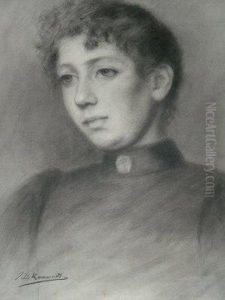James Dalzell Kenworthy Paintings
James Dalzell Kenworthy, although not as widely known as many of his contemporaries, was a British artist whose work spanned several decades in the early to mid-20th century. Born in 1884, Kenworthy developed an interest in art at a young age. He pursued his passion for art through formal education, although details about his early training are not extensively documented.
Kenworthy's artistic output is characterized by its variety, and he worked in multiple mediums, including painting and sculpture. There is evidence to suggest that his work was influenced by the broader movements of his time, such as Modernism, which saw a departure from traditional forms and practices in art, emphasizing new ways of seeing and representing the world.
During his lifetime, Kenworthy might have exhibited his work at galleries or been part of artistic groups, which was common for artists seeking to establish their careers. However, specific records of exhibitions or associations are not readily available. It is also possible that Kenworthy, like many artists, may have faced challenges in gaining widespread recognition or financial stability through his art.
Kenworthy's later years would have been marked by the global changes of the mid-20th century, including the aftermath of World War I, the Great Depression, and World War II. These events often had a profound impact on artists and the content of their work. He continued to create art throughout these tumultuous periods until his death in 1963.
Due to the limited information on James Dalzell Kenworthy's life and work, his legacy in the art historical canon may not be as prominent as that of his peers. Nevertheless, for those who study lesser-known artists, his work represents part of the rich tapestry of early 20th-century British art. It is possible that more information about Kenworthy's life and work could surface with further research, shedding light on his contributions to the art world.


